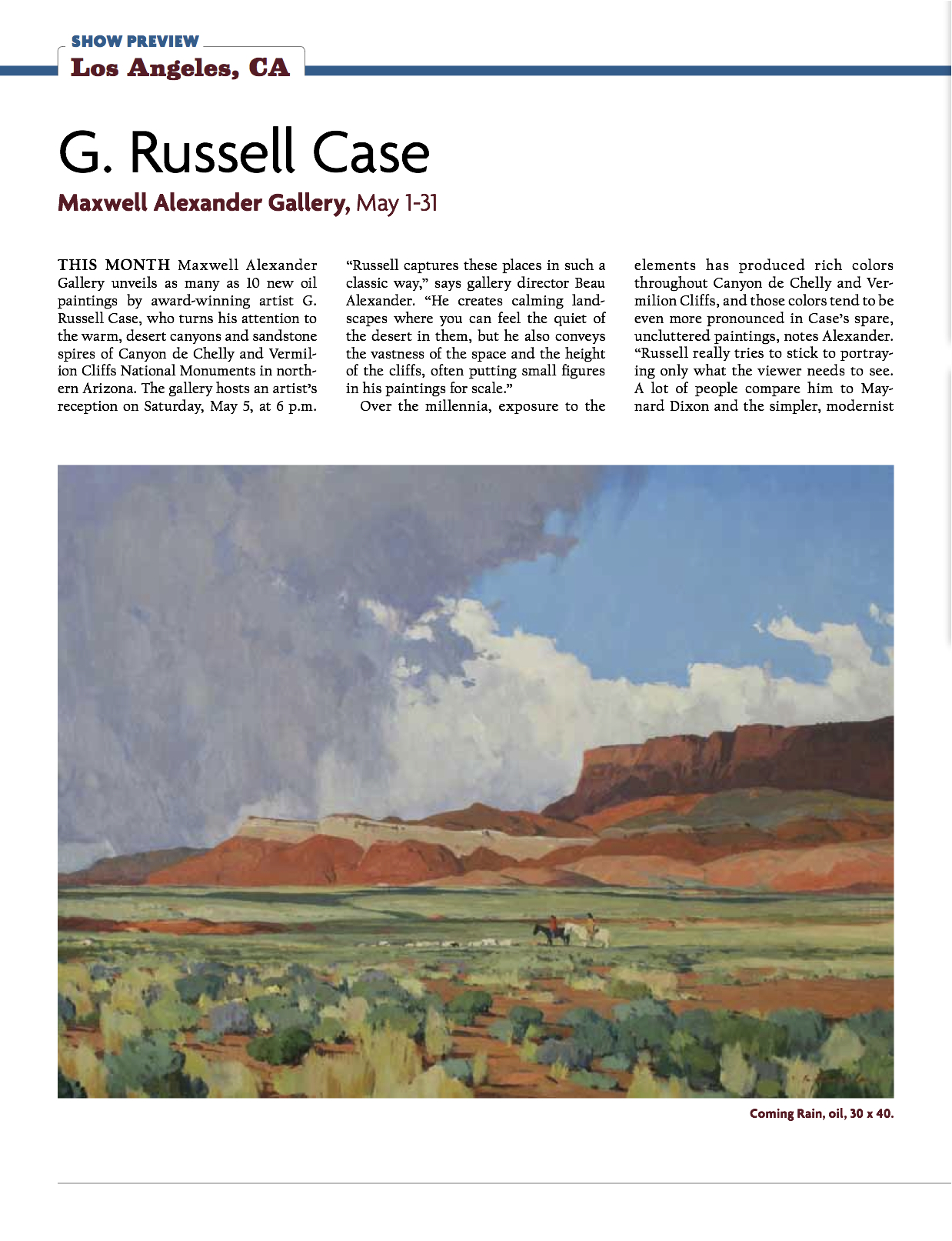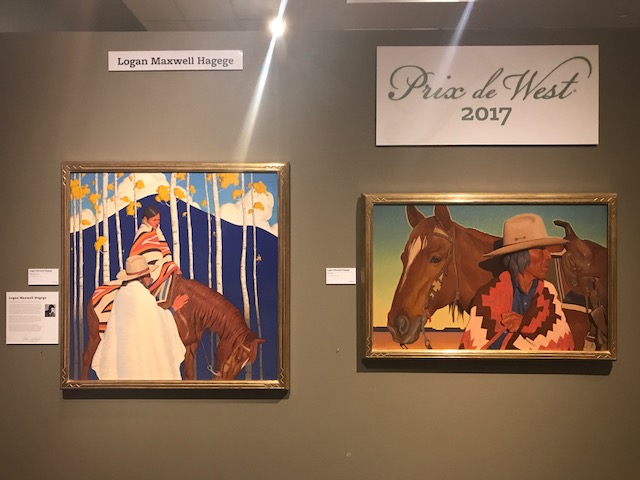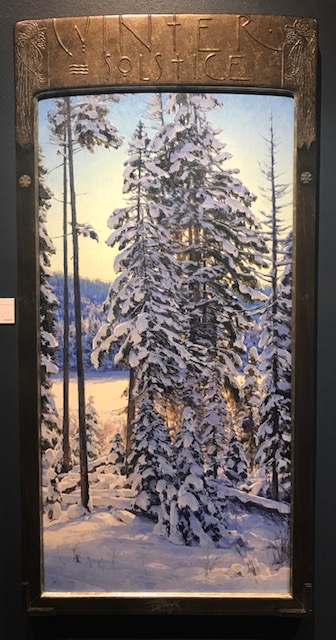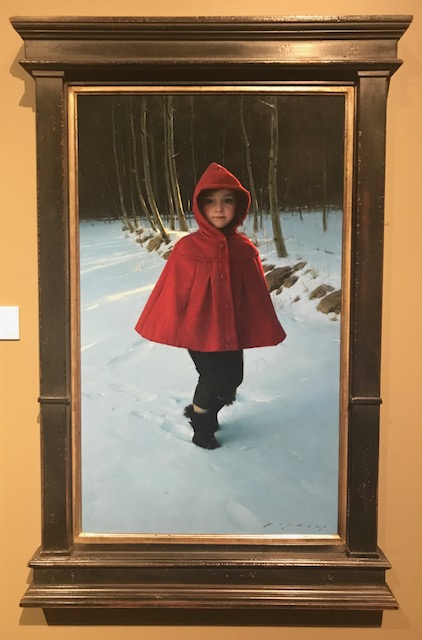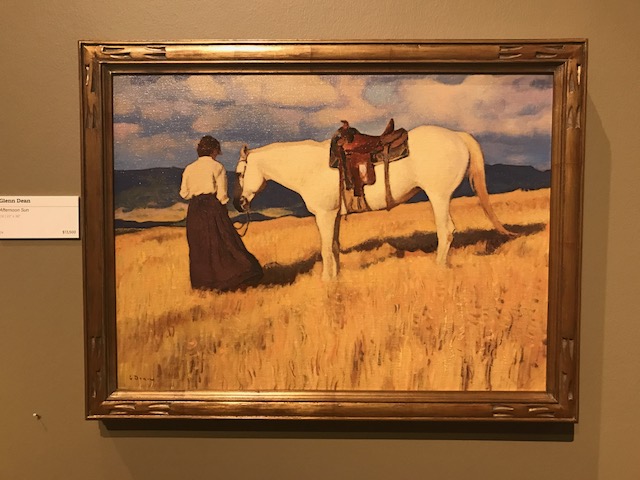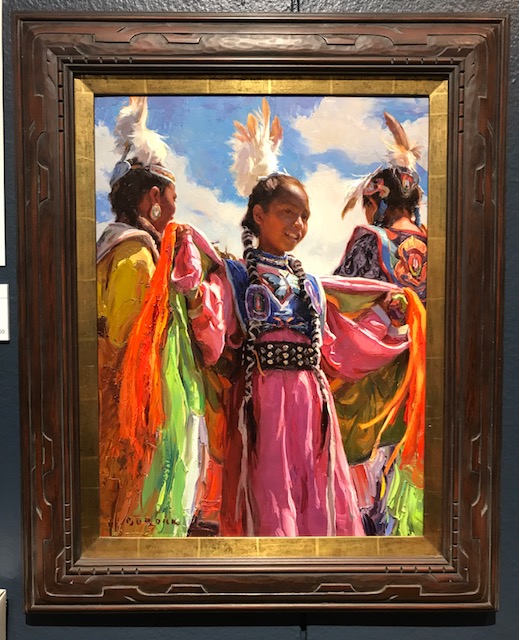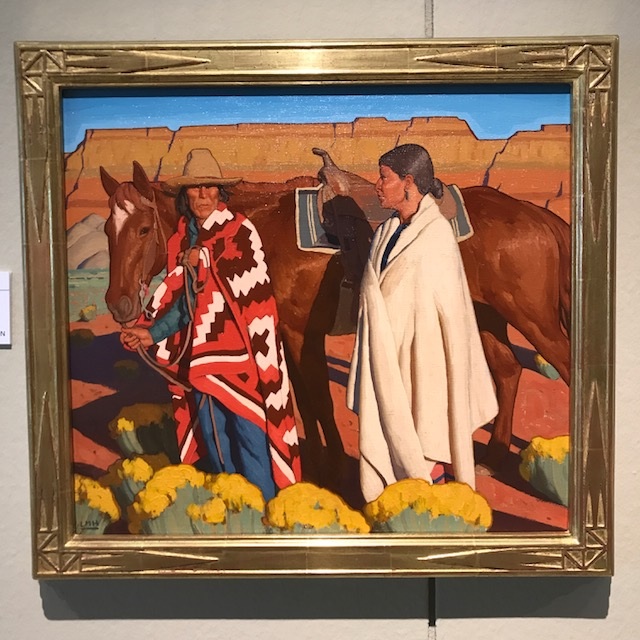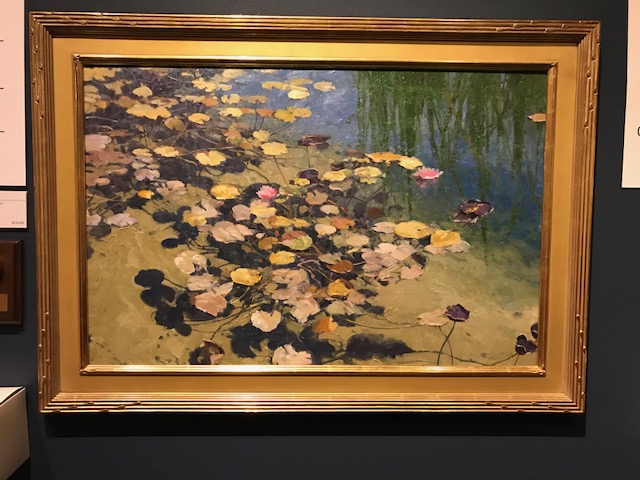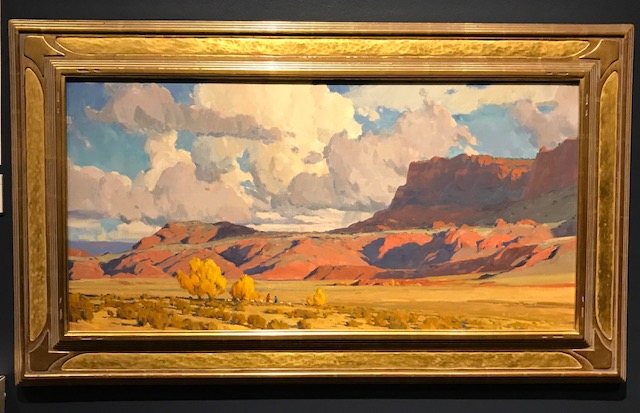G. Russell Case’s works often show the immensity of the land and sky towering over the desert. The size of his subjects is imposing and magnificent-terrifying when you think of your own place among the grandeur. And yet his monumental mountain cliffs and endless skies feel accessible, in large part to his careful inclusion of human figures, structures, or even just clusters of sheep that offer a visual scale that brings viewers into the painting without overwhelming them in the scenery.
“Adding those things helps with the vastness of the desert,” Case says from his Utah studio. “I’m drawn to these big, open places. And they really are quite big. The land just seems to go on for forever.”
Case, who has a new show opening at Maxwell Alexander Gallery in Los Angeles on May 5, will be presenting as many as 10 new works, including pieces like Between a Rock and a Hard Spot and Vermilion Flats, both of which feature stunning rock formations and distant cliffs, as well as smaller more intimate scenes of sheep and Native American sheepherders in the foreground. “Growing up on and around Indian reservations, you really do get to watch the human-scale elements of the land as these people walk through. It gives you some insight into their daily routine, and their personal stories, as they walk through these landscapes that are ruthless and barren,” the artist says, adding that the ruthless elements of the land can be seen in his works. “You can see in the land the struggle for existence as sagebrush stretches for miles and miles and then out in desert there’s a dot that is a person’s home. It reminds me a lot of Edward hopper, who did these great street scenes in Maine and the shut down shops filled with lonely silence.”
The new show also displays Canyon de Chelly, Repetition in Clay and Autumn Canyon- works that are punctuated with dramatic shadows that caress cliff faces and deeply carved ravines. “Shadows and other dark areas are usually what the composition hangs on. I draw with the shadows, and those areas anchor the painting,” Case says. Shadows are the silent partner in the painting, We see color and light, but it’s those parts of any painting that inform the composition.”
Other works on view include Coming Rain and Spring at Tabletop. Both are colossal landscape scenes with riders trudging through the endless sagebrush amid the monuments of the desert.
For the show exhibition, click here.

